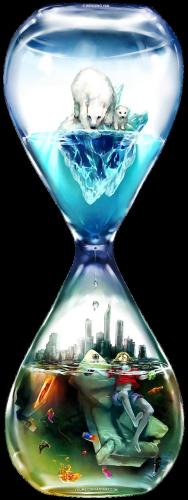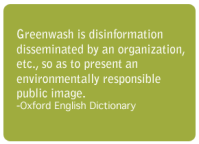We’ve done it!

The Pacific Garbage Patch is a Texas-sized swirling mass of the world's mostly plastic garbage floating around in the North Pacific Ocean.
We all know that our oceans and seas are polluted with plastic, bottles, bags and all sorts of plastic crap that is thrown out on a daily basis. Plastic containers left on the beach, trash from rivers, garbage from ships, fishing nets, etc. This pollution is a plague, totally out of all proportion and control.
On land we try to recycle as much as possible, but what happens when it gets to the sea?
The Pacific Gyre is the size of Texas, that’s hell of a lot of plastic; you imagine Texas covered in three feet of plastic. Check out this disaster on Greenpeace’s Pacific Vortex and you’ll get an idea of how disastrous this is.
If that is not enough to shock you, I’m going to refer to a BBC News article that will, and it’s not about the Pacific Gyre, it’s about your laundry, your neighbour’s laundry, every laundry in the world that has a washing machine!
Accumulating ‘microplastic’ threat to shores

Concentrations of microplastic were greatest near coastal urban areas, the study showed
Microscopic plastic debris from washing clothes is accumulating in the marine environment and could be entering the food chain, a study has warned.
Researchers traced the “microplastic” back to synthetic clothes, which released up to 1,900 tiny fibres per garment every time they were washed.
Earlier research showed plastic smaller than 1mm were being eaten by animals and getting into the food chain.
The findings appeared in the journal Environmental Science and Technology.
“Research we had done before… showed that when we looked at all the bits of plastic in the environment, about 80% was made up from smaller bits of plastic,” said co-author Mark Browne, an ecologist now based at the University of California, Santa Barbara.
“This really led us to the idea of what sorts of plastic are there and where did they come from.”
Dr Browne, a member of the US-based research network National Center for Ecological Analysis and Synthesis, said the tiny plastic was a concern because evidence showed that it was making its way into the food chain.
“Once the plastics had been eaten, it transferred from [the animals’] stomachs to their circulation system and actually accumulated in their cells,” he told BBC News.
In order to identify how widespread the presence of microplastic was on shorelines, the team took samples from 18 beaches around the globe, including the UK, India and Singapore.
“We found that there was no sample from around the world that did not contain pieces of microplastic.”
 The smallest fibres could end up causing huge problems worldwide
The smallest fibres could end up causing huge problems worldwideDr Browne added: “Most of the plastic seemed to be fibrous.
“When we looked at the different types of polymers we were finding, we were finding that polyester, acrylic and polyamides (nylon) were the major ones that we were finding.”
The data also showed that the concentration of microplastic was greatest in areas near large urban centres.
In order to test the idea that sewerage discharges were the source of the plastic discharges, the team worked with a local authority in New South Wales, Australia.
“We found exactly the same proportion of plastics,” Dr Browne revealed, which led the team to conclude that their suspicions had been correct.
As a result, Dr Browne his colleague Professor Richard Thompson from the University of Plymouth, UK carried out a number of experiments to see what fibres were contained in the water discharge from washing machines.
“We were quite surprised. Some polyester garments released more than 1,900 fibres per garment, per wash,” Dr Browne observed.
“It may not sound like an awful lot, but if that is from a single item from a single wash, it shows how things can build up.
“It suggests to us that a large proportion of the fibres we were finding in the environment, in the strongest evidence yet, was derived from the sewerage as a consequence from washing clothes.”
Source: BBC News
It appears that regardless of the visible plastic that pollutes the oceans, regardless of how much plastic we recycle, there is a greater threat that has existed longer.
Your laundry, your washing machine, it turns out, is one of the greatest dangers to mankind. Microplastic entering the sea, eaten by fish, we eat the fish whose metabolism has been altered by the plastic.
This is the strongest argument that I have seen for a return to 100% natural fibres and a return to hand washing. Remember the days when the washing water was used to water the garden and wasn’t wasted down the sewer.
Once again mankind in his rush to make life easier with washing machines and synthetic fibres has damaged the natural balance of the eco-system, perhaps beyond recovery.
Imagine: 7,000,000,000 people washing a shirt a day means that each week we potentially pour 93.1 quadrillion pieces of microplastic into the rivers and sewers of the world, and we haven’t even discussed socks, underwear and trousers. That’s 4.74 quintillion a year; I can’t even imagine a number that large, I don’t even know if quintillion exists…
Update:
It does, I just checked, Rubik’s Cube has 43 quintillion +/- possible combinations.





















Recent Comments